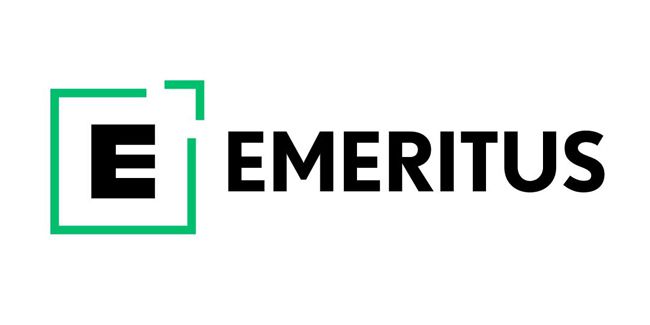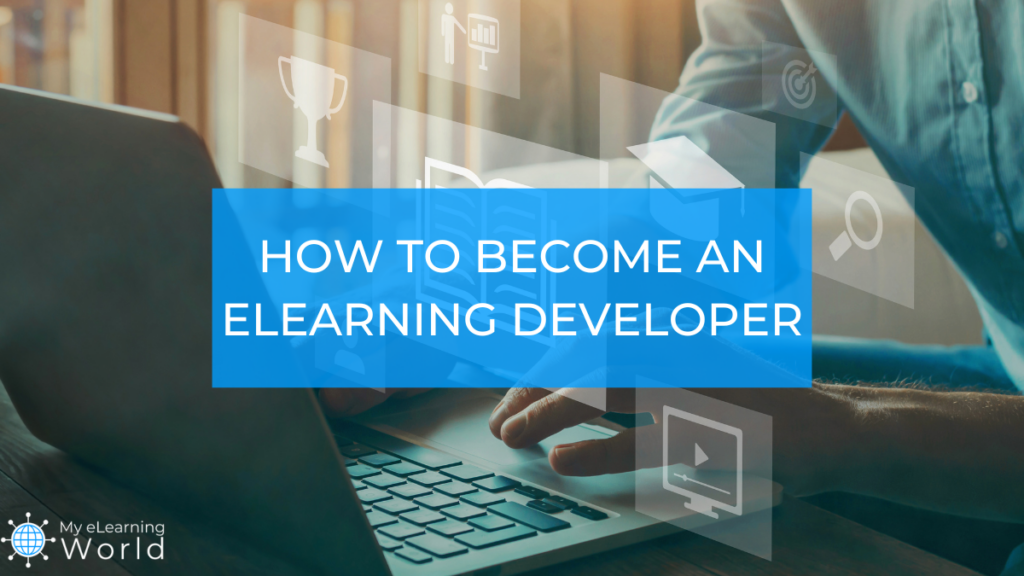Looking for a clear, straightforward guide with actionable advice on how to become an eLearning developer?
With the growth of technology, eLearning has become a popular choice for those looking to enter the field of education. And while there are many career opportunities in the field of online education, from a learning and development specialist to an instructional designer, eLearning developers are in high demand and have very bright career prospects as we head into the future.
In the guide below, we’ll cover everything you need to know about breaking into this lucrative, rewarding career, including:
- What is an eLearning developer?
- What do eLearning developers do?
- What skills do you need to be a successful eLearning developer?
- How can you become an eLearning developer?
- Do you need a degree to become an eLearning developer?
- How do you land your first eLearning development job?
- And more…
So, if you’re interested in becoming an eLearning developer, let’s get started…
Disclosure: Some of the links in this article are affiliate links, meaning at no additional cost for you, we might get a commission if you click the link and purchase.
What is an eLearning Developer?
An eLearning developer is responsible for the design, development, and delivery of educational content delivered electronically. This can include online courses, tutorials, learning modules, and more. They use various eLearning authoring tools to create engaging and interactive content that learners can access at any time.
They also work closely with instructional designers, curriculum developers, and other educational professionals to ensure that the content they create meets the needs of the learners.
Typically, eLearning developers receive an outline for an online course along with content from an instructional designer. The eLearning developer then uses a variety of authoring tools to code and build out the course. This may include designing graphics and animation, writing scripts for interactive activities, and creating multimedia elements such as slideshows or videos. Additionally, the developer must ensure that the course is accessible to multiple platforms and devices. Once the course is built out, the eLearning developer can upload it to a learning management system (LMS) so learners can access the content.
Ultimately, it’s up to the eLearning developer to ensure that the final product meets all of the requirements and provides an engaging, effective experience for diverse learning styles. This includes validating course functionality and making sure the content is free from errors or technical issues.
While eLearning development roles are relatively new, it is expected to grow in the coming years. This is due to the growing demand for online education and the need for developers who can create engaging and interactive content.
What Skills Do You Need to Become an eLearning Developer?
If you want to become an eLearning developer, you will need a few skills to succeed:
- Proficient in a variety of programming languages–While there are many different languages you can learn, some of the most popular include HTML, CSS, JavaScript, and PHP. It is also important to understand server-side scripting languages such as ASP, JSP, and Perl. These languages are used to create dynamic content that learners can access at any time. If you’re not familiar with these languages, don’t worry. Many eLearning developers start by learning one or two languages and then adding more to become more comfortable with the development process.
- Familiar with authoring tools–These tools are used to create the eLearning content you deliver. Many different eLearning authoring tools are available, but some of the most popular include Articulate Storyline, Adobe Captivate, and Lectora. It is also important to have a basic understanding of using these tools. This will allow you to create content that is engaging and interactive. When you start, it is important to find a tool that is easy to use and has a wide range of features. As you become more familiar with the tools, you can experiment with different features and functionality. This will allow you to create content that is truly unique and engaging for the learners.
- Understands instructional design principles–Instructional design principles will help you create content aligned with the learner’s goals and objectives. Additionally, understanding effective eLearning design will help you determine the best way to deliver the content electronically. Plus, if you want to create truly interactive and effective content, you should also consider adding multimedia elements such as audio, video, and simulations. You will need to be familiar with many different tools and technologies to become an eLearning developer.
- Analytical and problem-solving skills–As an eLearning developer, you will need to be able to analyze problems and find solutions. This will require you to have strong analytical and problem-solving skills. Additionally, you must be able to think creatively to find new ways to deliver content electronically. Additionally, you must be able to work independently and as part of a team. This will require you to have strong communication and interpersonal skills. Or, in other words, the ability to get along with others and work together. When you’re first starting, it can be helpful to find a mentor or coach who can help you develop these skills.
- Patience and perseverance–This job can be challenging at times, and you will need to be able to persevere through the tough times. Additionally, you must be willing to experiment and try new things. This job is constantly changing, and you will need to be able to adapt to the changes.
- Strong communication and interpersonal skills–This is important because you will be working with various people, including instructional designers, curriculum developers, and other educational professionals. You must be able to communicate effectively to ensure that the content you create meets the needs of the learners.
- Good project management skills–You will need to be able to manage multiple projects and tasks at once, while meeting deadlines. You must also be able to collaborate with team and delegate responsibilities when necessary. You need to be able to conduct an effective kickoff meeting with stakeholders and experts, determine project resources, and document details with a project plan and development timeline.
If you have the qualities and skills listed above, you have what it takes to become an eLearning developer. However, it is important to remember that this job is not for everyone. You must be willing to put in the time and effort to succeed. Additionally, you must be open to learning new things and expanding your knowledge.
Step-by-Step Guide to Becoming an eLearning Developer
As the demand for online education grows, so does the need for eLearning developers. If you’re interested in becoming an eLearning developer, here is a step-by-step guide to help you get started.
1. Get education in a relevant field
The first step to becoming an eLearning developer is to pursue a degree or certification in a relevant field. You can study many different fields, but some of the most popular include instructional design, educational technology, and communication.
When choosing a degree or certificate program, be sure to look for one that offers courses in programming, authoring tools, and eLearning design/instructional design.
The good news is there are some great online courses and certificate programs you can take, so you don’t have to leave your home or job to gain the skills you need. And you don’t necessarily have to pursue a costly, time-consuming four-year degree to get a job developing eLearning courses.
 Emeritus Professional Instructional Design Certificate | Online Certificate Course
Emeritus Professional Instructional Design Certificate | Online Certificate Course
Gain firsthand expertise in instructional design principles and methodologies through this unique Professional Certificate program. Create impactful learning solutions and improve people's ability to learn.
One program we highly recommend is the Professional Certificate in Instructional Design program from Emeritus.
This comprehensive certificate program teaches everything from the basics of instructional design to popular instructional design theories and best practices for the implementation and iteration of your courses.
In just 5 months, you can get all the training you need to earn a certificate and launch your career in the eLearning design and development field.
You’ll master the essentials of analytics to craft engaging learning solutions that provide top-notch educational experiences regardless of the tools or platforms used in the delivery. And you can gain the essential skills to design, compile, and present instructional modules that leave a lasting impact on your students.
You can learn more about the program and request a brochure at this link.
2. Get a job in the field
After you have a degree and specialization, you can start looking for eLearning developer jobs. There are many different places you can look for jobs, but some of the most popular include online job boards, educational institutions, and companies specializing in eLearning development.
To give yourself the best chance of landing an entry-level position in eLearning development, make sure you have a great resume as well as an online portfolio site where you can show off some of the projects you have worked on in the past.
For your resume, make sure the content in it matches the skills and qualifications mentioned in relevant job listings. When possible, tailor your resume to the job listing so that it is specific and relevant.
As for your portfolio, don’t let the inability to showcase your real projects stop you from having a portfolio. Simply remove proprietary content and use filler text or participate in eLearning challenges to easily and quickly build a portfolio.
Having a portfolio can set you apart from other job seekers who are more prepared and have a greater chance of getting hired. Education and experience alone aren’t always enough.
Landing your first job can be intimidating but don’t give up. It’s important to stay focused and have a positive attitude. Make sure you are prepared for interviews by doing your research and knowing what specific job duties you can offer employers.
3. Develop your skills on the job
Once you have a job, you can start developing your skills and gaining experience. The key is to always stay on the cutting edge of the industry as things will constantly be changing with new authoring tools, new technologies, new best practices, and more.
The best eLearning developers are always seeking out professional development opportunities to stay up-to-date on best practices in the field.
This can be done by taking courses, attending conferences, and reading books and articles about eLearning development.
As you develop your skills, you will be able to create more effective and engaging content for learners.
4. Advance your career
After becoming a certified eLearning developer, you can start advancing your career. This can be done by taking on more responsibility at your job, pursuing leadership positions, and becoming involved in professional organizations.
As you advance your career, you will be able to help more learners achieve their goals and objectives. Additionally, you will be able to earn more money and have more job security.
This is a general overview of how to become an eLearning developer. However, keep in mind that the specific steps may vary depending on your situation. For example, if you already have a degree in a relevant field, you may not need to get another one.
If you’re interested in becoming an eLearning developer, follow these steps. With hard work and dedication, you can achieve your goal.
A Final Word on Becoming an eLearning Developer
Becoming an eLearning developer can be a rewarding career choice. With the proper education and training, you can develop your skills to succeed in this field. Additionally, you can use your skills to help others learn and achieve their goals.
If you’re ready to make a difference in the lives of learners, consider becoming an eLearning developer.
By following the steps and tips in the guide above, you can get on the path to becoming an eLearning developer.
Have any more questions about how to become an eLearning developer? Leave us a comment below.


